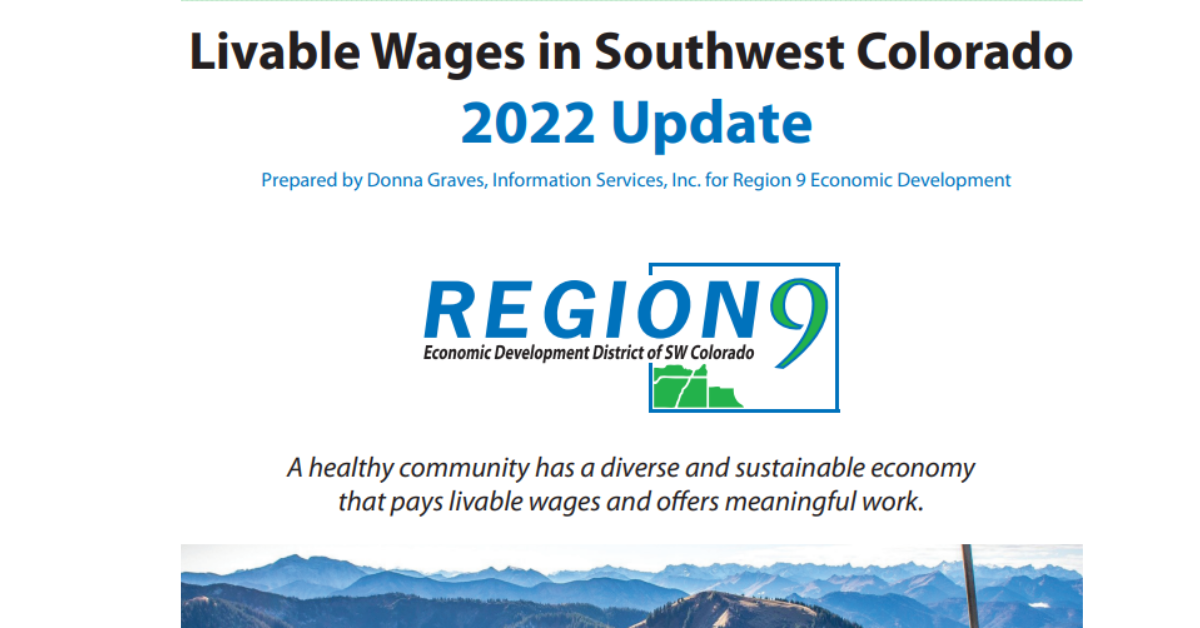Region 9 Livable Wage Report

Region 9 Livable Wage Report
A healthy community has a diverse and sustainable economy that pays livable wages and offers meaningful work. But what level of income is necessary to support a given size and type of household? A livable wage addresses the essential financial needs for basic living tools such as shelter, healthcare, childcare, and nutrition. When one earns less than a livable wage, he or she is forced to make undesirable choices such as working two or more jobs, working longer hours, making longer commutes, sharing a residence, or giving up basic items such as a vehicle or insurance. The Region 9 Economic Development District of Southwest Colorado (Region 9) has estimated livable wages since 1999, using a consistent method in order to compare costs and wages each year. In this report, Livable Wages in Southwest Colorado – 2022 Update, Region 9 uses estimated expenditures prepared for the Colorado Center on Law and Policy (CCLP) by the Center for Women’s Welfare
University of Washington School of Social Work (UW). The CCLP has allowed Region 9 access to the data inputs for our five counties (Archuleta, Dolores, La Plata, Montezuma and San Juan), as well as the
technical documentation.1 In Region 9, the amount needed to be economically self-sufficient varies by geographic location. The 2022 Colorado minimum wage is $12.56 per hour, which amounts to $26,527 per year working full time. We found that in Region 9, Montezuma County is the least expensive ($71,292 annually), and Archuleta County is the most expensive place to live ($92,796 annually) for a family of four. Using housing and childcare costs specific to each community we found that the Town of Pagosa Springs is also the most expensive community in the region for a family of four ($21.97 per hour for each working adult) due to the high cost of housing. Cortez and Mancos are the least expensive communities for a
family ($17.07 per hour for each working adult). This report presents livable wage estimates for each county/community in the region. When we link our livable wage findings to average annual wages by sector in each county in our region, we find that most employment sectors do not provide enough income to meet the basic needs of a family of four, especially if there is only one bread winner in the household. We know that there is a growing workforce shortage in our area. Being able to attract and retain workers is essential for a healthy economy. Closing the wage gap between current wages and self-sufficiency wages require both reducing costs and raising incomes. Raising public awareness at the local level is also essential to closing the wage gap. In order to enhance the quality of life through fair wages a number of strategies may be useful.
• Build a coalition of workers, employers, government and organizations who work together in achieving a living wage.
• Educate workers, employers and government officials about the importance of creating a living wage.
• Publicly recognize employers who provide, or aspire to provide, a living wage.
• Advocate for improving minimum wages at the local, state and national level.
